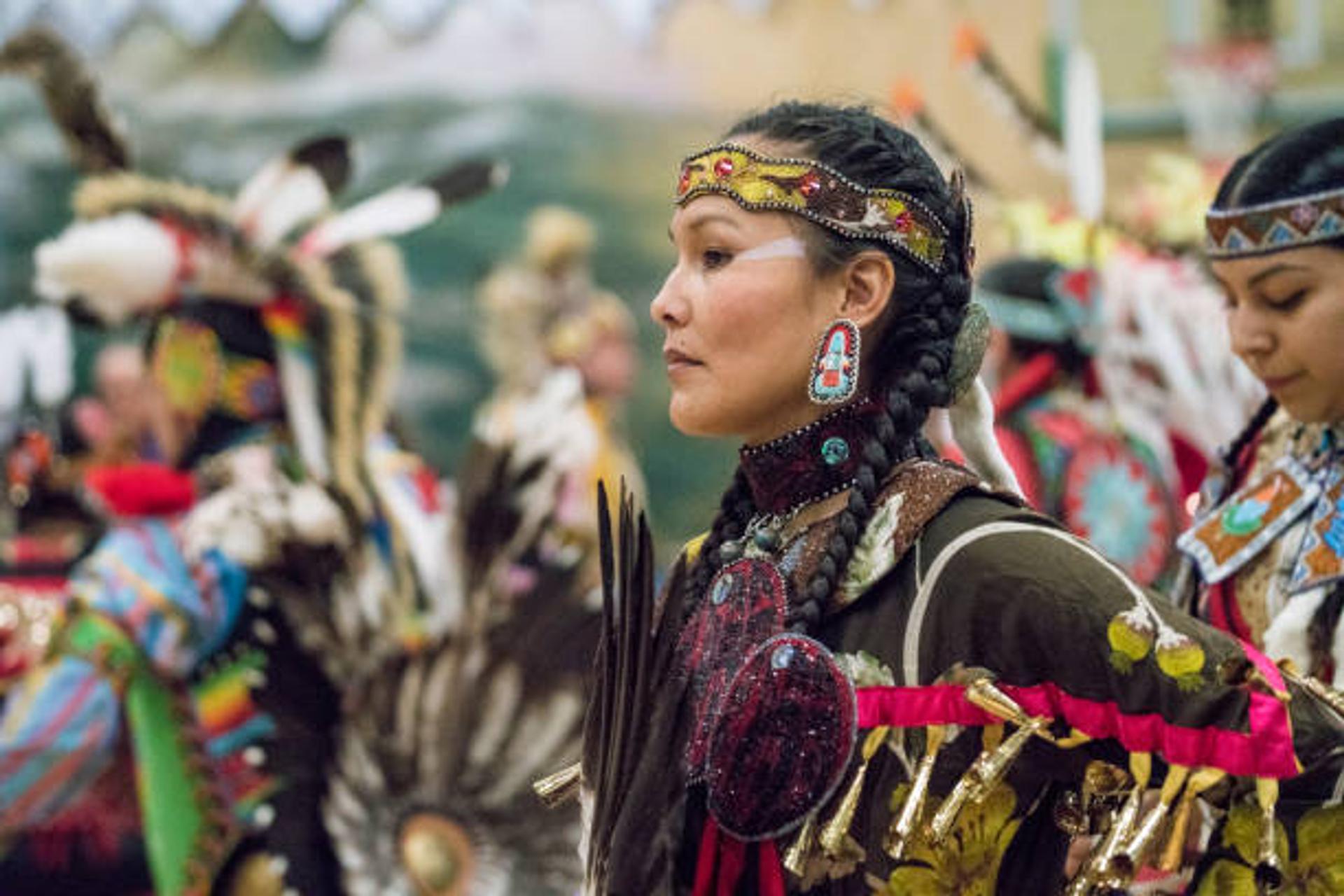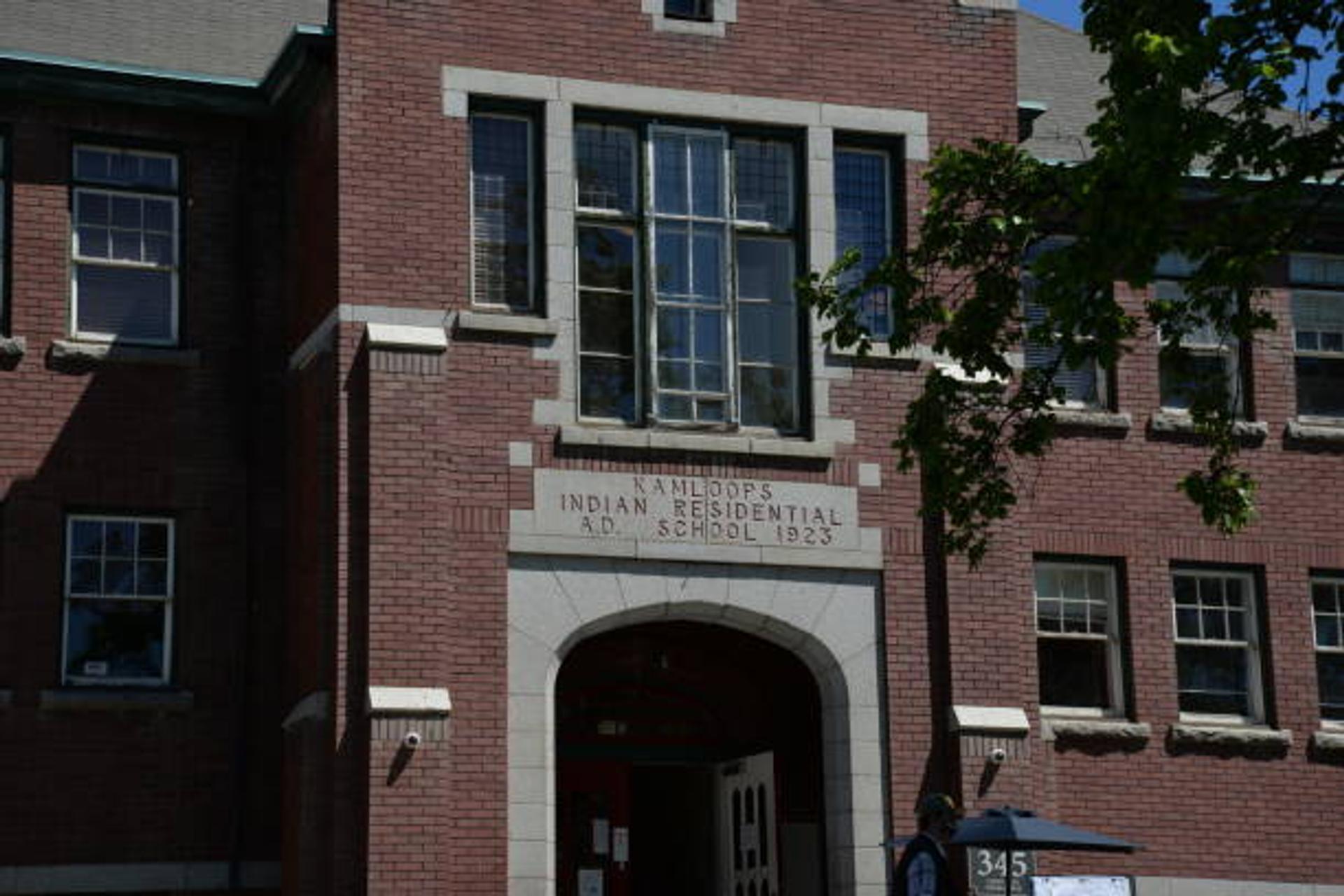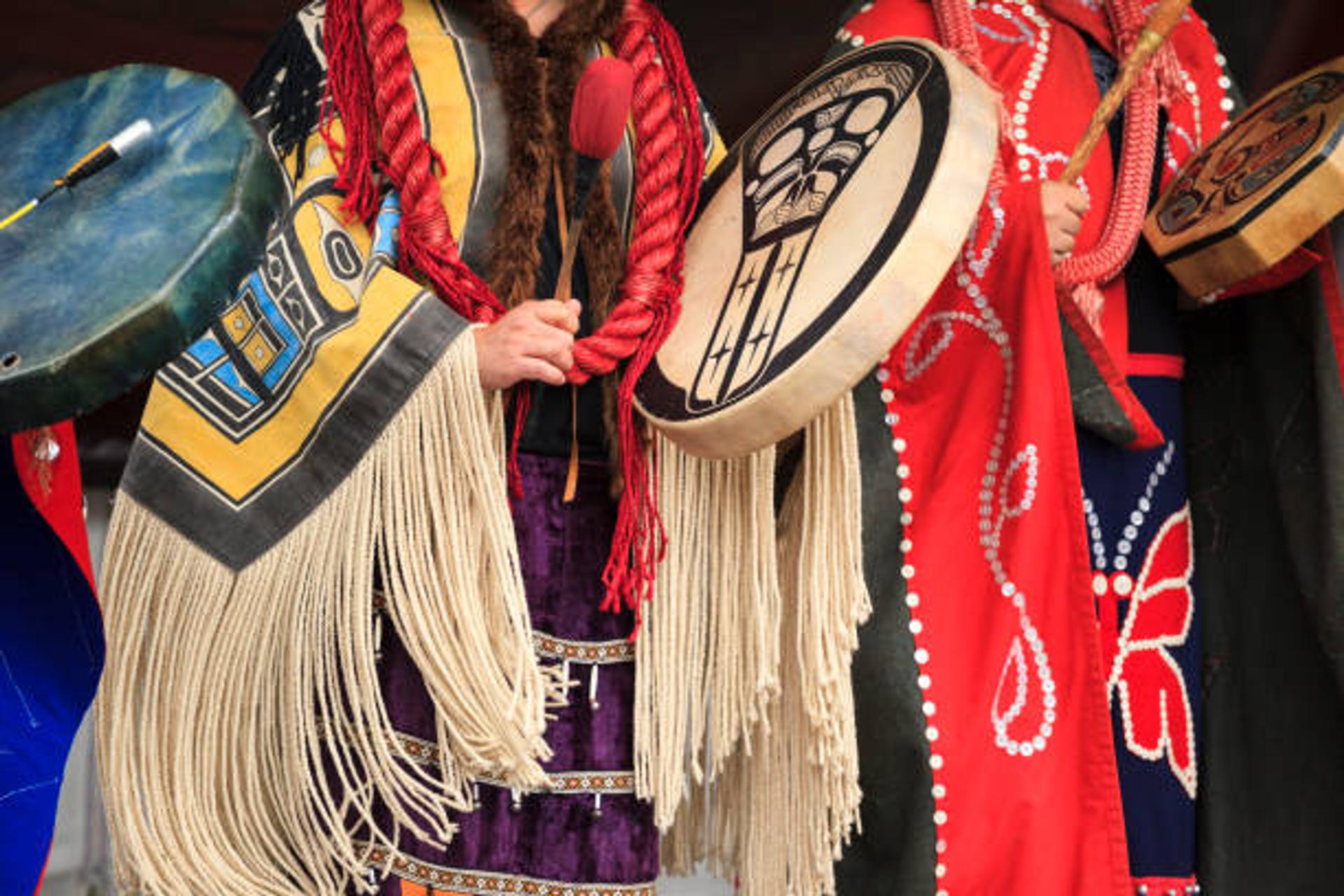Indigenous Identity: The Correlation with Sovereignty, History & Tech
Avneet Takhar
There has long since been an arduous history for Indigenous people in Canada where self-identity has not been in their own hands and determined by the government. To the present day, there’s an extremely wide range of emotions in which various communities still feel divisions. It stems from when showing a form of their Indigenous identity, that their rights are not always implemented, accepted and valued.
The dark cloud of “erasure”, generational family trauma, systemic racism or genocide that has affected many folks because of the identity that has been oppressed upon them to by the Canadian people and authorities, is also a deep-rooted issue that still exists.
Yet, there’s also the other side of it where close community values, the proud reclamation of languages and traditions, a start towards reconciliation and reparations have a place within Indigenous identity too.
But suffice to say, conspicuous sovereignty of Indigenous identity is still a relatively new concept whereby Indigenous peoples are taking a path to reclaiming what identity means to them. And they’re working within their own communities to determine this.
By recognizing, and going into breadth about the nuances of Indigenous sovereign identity, we uncover the ways in which it has been interpreted as from historical beginnings- to what it is has evolved to in 2022.
And how we at OneFeather have something in the works that is bringing the conversation of digital Indigenous sovereign identity to the table- quite literally. Read on to find out what that is and to listen to an exclusive chat that features Chief Robert Joseph.

What is Indigenous Sovereign Identity?
According to Sage Journals, “Indigenous sovereignty” means Indigenous self-determination. And Indigenous identity refers to how an Indigenous person self-identifies.
The History Behind Oppressed Indigenous Identity & Sovereignty
The War of 1812
As far back as 1815 after the War of 1812, Indigenous people in Canada have been subjected to inferior attitudes and actions, as colonizers began to dictate authority over them.
Prior to this, they lived under their own ways, oral government systems, sovereignty and beliefs – under the practices only of political, social and military realities of the fur trade.

The Indian Act- 1876- Present
When the Indian Act was officially put into place in 1876 by the Government of Canada, there was a monumental shift in how people were segregated because of their Indigenous identity and forced into assimilation. John A Macdonald, Prime Minister of Canada (1867-1873 and 1878-1891) openly described the implications of The Act:
“The great aim of our legislation has been to do away with the tribal system and assimilate the Indian people in all respects with the other inhabitants of the Dominion as speedily as they are fit to change.”
The identities of Indigenous peoples relating to land ownership, culture, language, important ceremonies including “Potlaches” (a gift-giving ceremony for First Nations), and governance which was formerly run by their own council leaders, or appointed Chiefs were all disabled in order to cut them off from their traditions.
Further restrictions were placed on First Nations women who lost their “Indian Status” if they married someone who didn't have status, or if they were widowed or separated from their husband- consequently meaning the same for their children.
Residential Schools – 1831-1996
The introduction of Residential Schools (1831-1996) under the Church and Government of Canada, meant that all Indigenous children from First Nations, Métis and Inuit backgrounds were torn away from their reservations and housing communities and sent far away from their families to “learn to assimilate”. They did not receive adequate education, were not allowed to speak their own language, were mistreated and abused, lived in extremely poor conditions and there were many who became deceased there, left in “unmarked graves” without their families ever knowing what happened to them. Residential schools have been perceived historically as the perpetrator of “cultural genocide” against Indigenous children.

The Sixties Scoop
The Sixties Scoop (1961-1980) was a government-enforced practice of taking newborns and small children from their families into the care system and in most cases without parental/guardian consent. They were sent to foster or adoptive non-Native families (mainly Euro-Canadian), with an absence of being connected to their Indigenous identity as again, they were placed in assimilation-focused environments.
The children were often taken to mixed schools where they were the only Indigenous ones and felt confusion and embarrassment of their original heritage because of the disconnection and racist teachings from schools about Indigenous people.
Indigenous Identity- Dictated by the Government
First Nations Peoples
In 1956, the Government of Canada began issuing the Certificate of Indian Status (CIS) - also known as a Status Card, as an official identity document confirming the cardholder to be registered under the Indian Act. These were and are reserved for First Nations people as they were considered “Indian” as defined by the Indian Act. Whereas Métis and Inuit were considered “Non-Status Indians”, so did not - and to this day, do not have Status Cards.
The Indian Act has long since been considered an oppressive tool by many Indigenous folks due to how it dictates First Nations ways – gearing away from self-identity and self-determination.
However, since the Bill C-31 (1985) amendment in the The Indian Act more people have gained “Indian Status" for entitled rights and have a less obstructed segue way into Indigenous self-governance than before. This, along with additional amendments in 2011 and 2017 for rights to marital property for people on reserve and the abolition of residential schools, has meant that it’s a gradual work in progress to become a system for reconciliation and reparations.

Métis Peoples
For those who identified as Métis, as part of the Constitution Act 1982, they along with First Nations and Inuit people were observed as having rights as Indigenous people under Canadian law and it introduced a pathway of recognizing self-governance for the communities . The Métis community could apply for Métis citizenship since the Constitution Act, by Métis organizations .

Inuit Peoples
In 1941 the “identification disc system” was implemented for the Inuit community by which they were assigned a number on a disc to be kept with them at all times, instead of being identified by their names.
Over 2 decades later from 1968 - 1972, this was discontinued and the “Project Surname” was put into place by the Northwest Territories Government (NWT), whereby Inuit people registered their family and given names.
Much later, the Nunavut Act of 1993 was passed for self-determination, providing basic legislative, executive and administrative structures of the Government of Nunavut, which closely resemble those of the Government of the Northwest Territories.
In some circumstances for Inuit folks in Nunavut, photo I.D cards are available to serve those who are travelling outside the territory, but it may not always be accepted.
For other Inuit folks, they use forms of government-approved ID such as birth certificate, passport or driver’s license for travel. And there’s Inuit client identification numbers which can be used for benefits (not travel), that come in the form of a Government of the Northwest Territories health plan number, Government of Nunavut health plan number and NIHB (non-insured health benefits) client identification number (N-Number) and for financial assistance with beneficiary cards (if eligible).

What Indigenous Identification Provides Today
There are some benefits that Indigenous people have access to depending on their situation on a case-by-case basis, including:
- Using it as a form of government I.D
- Crossing the Canada–U.S. border at both land and marine ports of entry (subject to border control officer's discretion)
- Tax exemptions, in specific situations
- Providing some non-insured health services
- Grants and funding for higher education
However, there are setbacks that happen daily and an infamous case is Maxwell Johnson’s by which both he and his 12-year-old granddaughter were arrested in 2020 after they tried opening a bank account using a Status Card.
This gave way to there being a spotlight shined on how First Nations people are treated when they present their Status Cards to assess discrimination through a survey by The Union of BC Indian Chiefs (UBCIC). The data revealed that more than 60% of Indigenous people experience discrimination.
The Slow Path to Sovereignty
As Indigenous people slowly get back to the place of self-governance and self-identity that came before the authorities and Government of Canada’s systems, or they work alongside them to give the autonomy that serves Indigenous rights, there's still a long way to go for reaching a state in which it becomes completely fair for all Indigenous folks.
But, with more Indigenous-owned and operated businesses out there taking it into their own hands, offering services to their communities that help provide Indigenous sovereignty and Indigenous identity verification, there’s hope as to reclaiming what is rightfully theirs, on their own terms.
First Nations band offices, friendship centres, Métis and Inuit regional offices all provide services to their communities regarding identity documents.

The Digital Effect on Indigenous Identity & Sovereignty
There’s been a rise over the years of Indigenous Wi-Fi, software, tech, and financial companies that are further helping their communities through the accessibility of services that empowers their Indigenous identity. They are offering authorized identity verifications or the tools to provide this, and operating via an Indigenous lens.
In an online Covid-19 article revealing that just 24% of Indigenous households have access to high-speed Internet, in Canada with rural communities affected the most, Indigenous telecommunications across the country have come together to target areas in need.
Indigenous banks, financial institutions, and investment platforms with the interests of Indigenous people in mind are becoming more prevalent. Due to the stigmas the community face whether it’s being treated unequally or suffering from racial profiling when showing their Indigenous identity documents, these outlets are paving the way for Indigenous sovereignty and identity to come as one, and being understood and valued rather than treated with suspicion.
Online providers for status and citizenship are available to verify identity and again, come from a place of assisting their communities to make things easier in the process, rather than difficult.

Indigenous Identity is Dynamic
Indigenous identity is complex and ever-evolving. Before historical changes, during the hands of dictatorship under the Government of Canada and to the strides of breaking into self-identification in present day (with that being recognized from an “official” and “legal” standpoint too), Indigenous identity has always stood strong in its unwavering presence no matter how others tried to eradicate it.
And the ways that it is being strengthened further with sovereignty, being enriched with cultural traditions and values and the presence of technology with it, demonstrates that it will continue to be a powerful source of truth.
Chief Robert Joseph & Digital Indigeneity: OneFeather X WTN Podcast
To cover this topic in more depth, OneFeather’s Founder Lawrence Lewis has teamed up with What’s That Noise?! podcast to interview various influential members of the Indigenous community to speak about their experience on the parallels of tech, sovereignty and Indigenous identity in this digital era.
Tune in via our Youtube channel for the full conversation:
So, what can we expect from the podcast based on digital Indigeneity?
Special guests will include:
- Chief Robert Joseph author of Namwayut: We Are All One -one of Indigo’s Best Books of the Year 2022
- Josh Nilson, Co-founder of East Side Games which has been recognized for their iconic games such as Ru Paul's Drag Race and Trailer Park Boys: Greasy Money, earning the title of the Top 50 Mobile Game Makers 2020
- Award-winning actress and film director, Elle-Maija Tailfeathers whose recent movie Night Raiders received "Best Motion Picture" at the Canadian Screen Awards 2022
To be the first to listen to the exclusive conversations, subscribe to our newsletter here or below, and follow our blog and social channels on Facebook, LinkedIn, Youtube, Twitter and Instagram.
You can also listen in via Apple Podcasts and Spotify.
Glossary
Indigenous Sovereign Identity: according to Sage Journals, “Indigenous sovereignty” means Indigenous self-determination. And Indigenous identity refers to how an Indigenous person self-identifies.
Indigenous Identity: according to Indigenous Corporate Training Inc. someone who is native to the land, and within Canada are First Nations, Métis or Inuit.
The Indian Act: according to Indigenization Foundations, passed by the federal government of the new Dominion of Canada in 1876 and is still in existence today with amendments. An act that provides authority over “Indian” affairs affecting First Nations peoples.
First Nations: according to Indigenous Corporate Training Inc. First Nations is a term used to identify Indigenous peoples of Canada who are neither Métis nor Inuit.
Métis: according to Indigenous Corporate Training Inc. Métis peoples are people of mixed Indigenous and European ancestry.
Inuit: according to Indigenous Corporate Training Inc. Indigenous people in northern Canada, living mainly in Nunavut, Northwest Territories, northern Quebec and Labrador.
“Non-Status Indian”: according to Indigenous Corporate Training Inc. are those not registered under the Indian Act, but are Indigenous (usually Métis and Inuit peoples).
“Status Indian”: "Status Indians" - are those who are registered under the Indian Act, (usually First Nations peoples) and are Indigenous.
* The term "Indian" is not for use of anyone other than those who self-identify as such
Status Cards- there are two versions (issued to those under The Indian Act)
Secure Certificate of Indian Status (SCIS): according to Indigenous Services Canada the Secure Certificate of Indian Status, or secure status card, issued centrally by ISC, which has a number of security features.
Certificate of Indian Status (CIS): according to Indigenous Services Canada The Certificate of Indian Status, or status card, is still issued in some band offices. This card has only a limited number of security features found on other government-issued identity documents.
NIHB: according to Indigenous Services Canada non-insured health benefits for First Nations and Inuit peoples who are eligible.
Residential Schools: according to The Canadian Encyclopedia government-sponsored religious schools that were established to assimilate Indigenous children into Euro-Canadian culture (1831-1996).
"The Sixties Scoop”: according to Indigenous Foundations Arts (UBC) refers to the mass removal of Indigenous children from their families into the child welfare system, in most cases without the consent of their families.